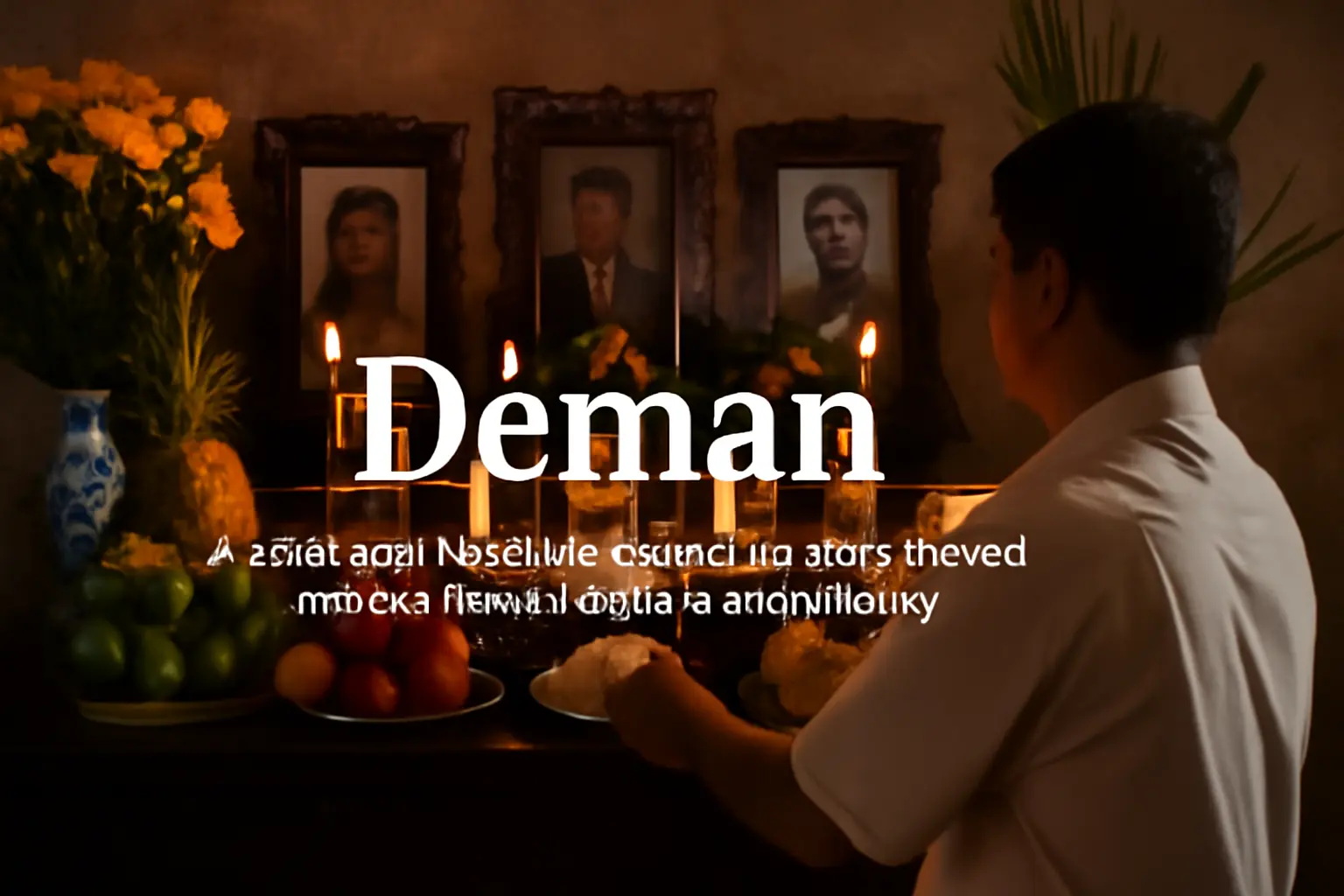Đeman: A Journey Into Tradition, Ritual, and Culture
If you’ve ever come across the word “đeman” and thought it resembled the name of a superhero, you’re not entirely wrong– it does sound legendary. In actuality, đeman is an interesting facet of Vietnamese culture. It is a fusion of the elements of the lễ đeman (ceremonial components), the community spirit vibrant and integrated, the more social aspect of the community, and the practiced nghi lễ đeman (rituals).
Đeman là gì?
When answering the question, “đeman là gì,” one must include more than just the meaning of a ritual. It holds significance as a cultural symbol, a celebration of life cycles, and a channel connecting the present to the world of our ancestors. One could think of it as a primitive “family reunion,” where, instead of awkward small talk, you have to deal with prayers, offerings, and other symbolic gestures.
The Roots of Đeman Tổ Tiên
For a culture that greatly emphasizes ancestor worship, the practice of “đeman tổ tiên” serves to show the culture in practice and ensures that the younger generations never lose sight of the “family tree.” “Đeman tổ tiên” provides the worshipers, in this case, the family, with a sense of mental and emotional connection to their ancestors and lineage. It is not “nostalgia” in the sense that it is a mere memory, it is more of a continuity that helps the family define their boundaries and remind them that their respect does not end with the last family dinner.
Nghi Lễ Tổ Tiên Đeman
The “nghi lễ tổ tiên đeman” involves a series of practices that help the performer channel their intentions and mental focus. For example, the burning of incense, preparation of food, and other offerings. These actions are not “rituals” in the sense of habit, they are “spiritual” actions that communicate with the ancestors. Instead of emojis, there are rice and fruits, and it is candlelight that does the talking.Đeman Truyền Thống (Traditional Essence)
When we call it “đeman truyền thống,” we mean the classic version that has stood the test of time. The focus is on the details that matter: the ceremonial chants and the clothing. It’s the culture version of classic fashion: it’s vintage, timeless, respected and still powerful even today.
Lễ Hội Đeman: The Community Comes Alive
Lễ hội đeman is the opposite of small family-only gatherings. It’s a full-scale festival, where villages come and celebrate with dance, music and food that is shared. Think of Thanksgiving, but with Vietnamese food, a bit of spirituality and a lot less arguing about politics. The festival aspect is a wonderful break from the customary solemnity of the rituals.
Văn Hóa Đeman: Culture Intertwined With Identity
The practice of văn hóa đeman shows how deeply it is rooted in Vietnamese culture. It’s more than just their heritage: it is how a community of people has chosen to define themselves. Through song, shared prayers and traditional clothing, đeman serves as a living classroom, imparting lessons from the ages to the younger generation.
Đeman Việt Nam: Building Practice National Identity
Despite differences across the various regions of the country, đeman Việt Nam represents the entirety of the nation. From the North to the South, local variations create a rich tapestry. However, the core message remains constant: celebrating the past and the spirit of togetherness. Like different remixes of a much-loved song, everyone has their own take.
Nghi Lễ Cộng Đồng Đeman: Where Unity Shines
The largest community celebration, the nghi lễ cộng đồng đeman, showcases the spirit of the community and unity as it brings together whole villages and even districts to participate in a shared act of commemoration and celebration. The community spirit and shared focus create connections deeper than the most reliable Wi-Fi, and you don’t even need a password.
Đeman và Tâm Linh: Spiritual Depths
More than a cultural practice, the spirituality of đeman và tâm linh is important to many people. The acts are intended to keep peace and balance with the living and the dead. This isn’t about fear, but a grateful celebration for the dead. Acts are done in the form of a ritual to thank and celebrate the ancestors for their guidance.
Nghi Lễ Mùa Thu Đeman: Timing with Nature
Interestingly, many communities integrate the celebration of the autumn ritual, nghi lễ mùa thu đeman, with the harvest. The rituals are performed to recognize and honor the changing seasons, the thankfulness for the harvest, and the hope for a bountiful future. Open fields become temples as nature and human life balance in harmony.
Harvest Gratitude
For crops, we have a shift in the farming calendar to remember the work, the focus and everything spiritual that surrounds the act of planting and harvesting. It’s also a yearly reminder that the food we consume isn’t magic, and a lot of work needs to go in for everything before it blesses us from the hands of the ancestors.
Preserving the Old Ways
In balancing the new and the old, old ways simply find a new place to exist. In defiance to modernity’s engravings on Vietnam, there lies doing the old practices – it simply takes community. In doing so, the new generation are taught, and these practices are kept alive. Older practices are recipe traditions in that they get richer with time and generations.
Bonds Beyond Bloodlines
Addressing the community and harvesting as a collective, the glue of culture provides togetherness, proof that respects what connects us to the past as unity and collective in the present.
Why It Matters
The need for community and shared culture gives unity, great and small. The need for traditions is the final and only truth that societies are built on. In a time of fast everything – food, fashion and Wi-Fi – it’s everything to societies to give that pause.
Visit Here for more info ventscripe
Hỏi đáp về Đeman
Nguyên nhân lễ đeman là gì?
Để thờ cúng tổ tiên, giữ gìn phong tục tập quán.
Nghi lễ đeman với thờ cúng thường ngày khác nhau như thế nào?
Đối với nghi lễ đeman, sẽ có những lễ vật, bài hạ và tập trung đông người, khác với việc cầu nguyện trong thờ cúng ngày thường.
Đeman tổ tiên có ý nghĩa gì?
Đeman tổ tiên là thờ cúng tổ tiên, và nhấn mạnh tổ tiên là người bảo hộ cho dòng tộc.
Lễ hội đeman có phải chỉ tổ chức cho các gia đình không?
Không. Lễ hội đeman là tổ chức cho cả cộng đồng.
Đeman và thu hoạch có liên quan như thế nào?
Nó liên quan đến việc thờ cúng tổ tiên sau mỗi mùa vụ, và cầu nguyện cho mùa vụ được thắng lợi.
Ngày nay, đeman cổ truyền được gì và như thế nào?
Được thông qua những lễ hội văn hóa cộng đồng và sự tham gia cộng đồng.
Ngày nay, đeman có ý nghĩa gì không?
Có. Đeman được tổ chức hợp để giữ gìn bản sắc, xây dựng văn hóa và tinh thần văn hóa cộng đồng.
Another Topic to Read: Osteopur



